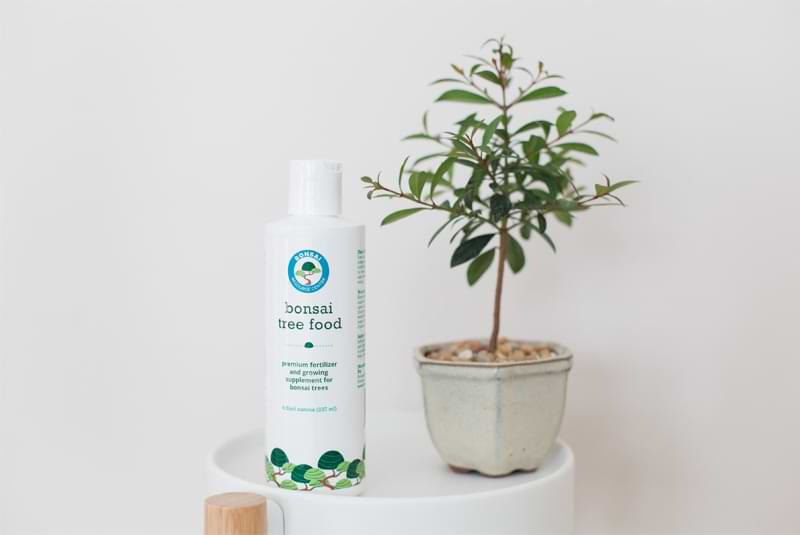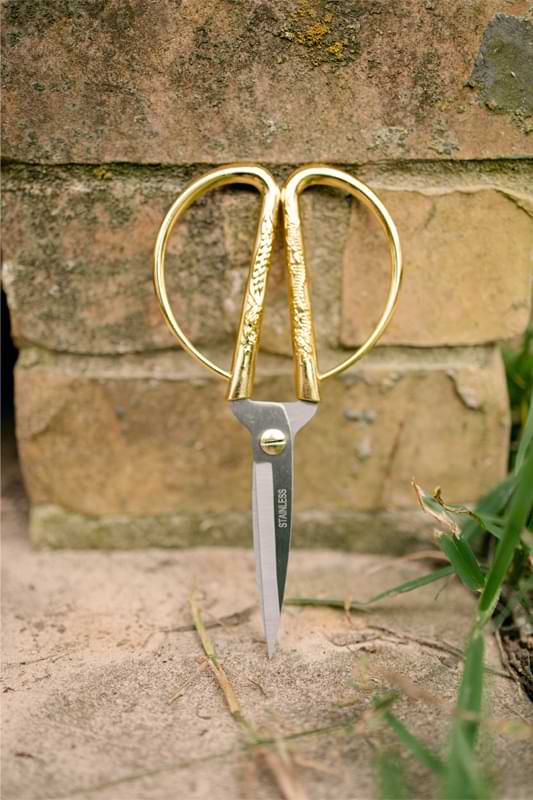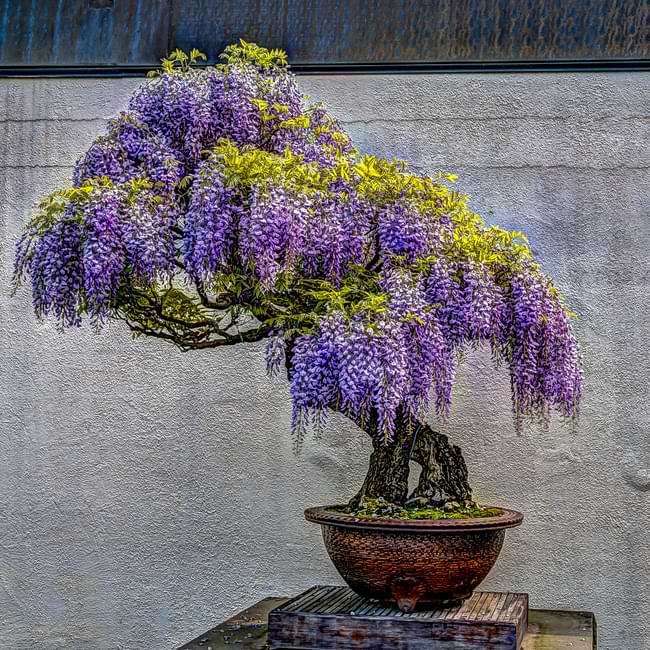If you’re a bonsai enthusiast looking for a unique and beautiful addition to your collection, then look no further than the stunning blue jacaranda bonsai. With its delicate foliage and vibrant purple flowers, this tree is sure to capture the attention of anyone who sees it.
However, caring for a blue jacaranda bonsai can be tricky without proper knowledge. That’s where we come in! In this guide, we’ll cover everything you need to know about how to care for your blue jacaranda bonsai so that it thrives and flourishes in your home or garden. Let’s jump in!
What Is Blue Jacaranda Bonsai
Blue jacaranda bonsai, also known as Jacaranda mimosifolia, is a unique and elegant tree that is native to South America. It belongs to the family of Bignoniaceae and has delicate fern-like foliage which bears large clusters of purple flowers in late spring or early summer.
The blue jacaranda bonsai is popular among bonsai enthusiasts mainly because of its beautiful aesthetic. The tree’s leaves are compound with up to 18 leaflets per leaf, giving it an intricate appearance.
One interesting fact about blue jacarandas is that they produce a lot of seeds every year, which can be collected for propagation purposes. These seeds are relatively easy to germinate and grow into healthy trees with time, although it’s a rather lengthy process to grow a whole new bonsai tree!
When trained as a bonsai, the blue jacaranda requires careful nurturing because it can be sensitive to changes in temperature and moisture levels. With proper care techniques such as pruning and repotting at appropriate times throughout the year, however, this species makes for an excellent addition to any collection.
If you’re looking for a tree that adds gracefulness and beauty wherever it grows while challenging your skills as a gardener/bonsai practitioner simultaneously – then look no further than the mesmerizing Blue Jacaranda Bonsai!
Blue Jacaranda Bonsai Care
Taking care of a Blue Jacaranda Bonsai is crucial to its growth and survival. Caring for your bonsai tree is easy once you get the basics down and have a general understanding of what your plant needs to thrive.
Water Requirements
Watering your Blue Jacaranda bonsai is the most important aspect of caring for your bonsai tree. Over-watering or under-watering can both be harmful to the tree, so it’s important to get it just right.
The first thing you need to do is check the soil moisture regularly by using a moisture meter to measure the moisture levels of the soil. If you don’t have a moisture meter, or don’t want to get one, you can easily test moisture levels with your fingers. All you have to do is stick your finger in the soil about an inch deep. If it feels dry, then it’s time to water. It’s best to use a watering can with a fine nozzle or a spray bottle so that you don’t disturb the soil too much.
When watering your bonsai, make sure that you water thoroughly until water drains out of the drainage holes at the bottom of the pot. This ensures that all parts of the root system are hydrated properly. Better yet, if you bottom-water your bonsai tree, it will promote stronger root growth and will allow your plant to soak up all the water it needs before you drain the excess out. To bottom-water, just place your bonsai tree pot in a slightly larger pot that has a few inches of water at the bottom. Leave it there for 30-45 minutes, and then take it out of the pot to let the excess water drain.
During summer months when temperatures are high and humidity is low, you may need to increase your watering frequency as evaporation rates will be higher. Conversely, during winter months when temperatures are cooler and humidity levels are higher, you may not need to water as frequently.
Remember that every Blue Jacaranda bonsai has unique needs depending on factors such as size and age; therefore, monitoring your tree closely will help determine its specific watering requirements over time.
Light Requirements
Light is an essential element for the growth and development of Blue Jacaranda Bonsai. These trees require a good amount of sunlight to thrive, but they are also susceptible to heat stress. Therefore, it is essential to provide adequate shade during peak hours.
Blue Jacaranda Bonsais can tolerate direct sunlight for several hours in the morning or late afternoon when temperatures are cooler. However, exposure to intense light during midday can cause leaf scorching and drying up of branches.
The ideal location for Blue Jacaranda Bonsai would be where it receives four to six hours of direct sunlight daily with partial shade during extreme heat conditions. If you do not have access to natural light, using artificial lighting could be an excellent alternative.
Supplemental lighting is beneficial as long as you use grow lights designed specifically for bonsai and keep them on for 12-14 hours per day. Avoid providing too much or too little light, which can lead to weak growth patterns or could even kill your bonsai tree.
Soil Type
The soil type you choose for your blue jacaranda bonsai is crucial to its overall health and growth. A well-draining soil mix will help prevent waterlogging and root rot, which can quickly kill off your tree.
A good bonsai soil mix should consist of a combination of organic matter, such as peat moss or coconut coir, and inorganic materials like perlite or grit. This blend will provide the necessary nutrients while also allowing for proper drainage.
Selecting the right soil mixture is an important factor in ensuring that your blue jacaranda bonsai thrives in its miniature environment, so opt for a potting mix that is designed for bonsai trees specifically, and you won’t have any soil problems until it’s time to repot your tree.
Temperature
Temperature is an important factor to consider when it comes to the care of Blue Jacaranda Bonsai. These trees prefer warm temperatures and cannot tolerate extreme cold or frost. During winter, it is recommended that you protect your bonsai from freezing temperatures by bringing it indoors or placing it in a sheltered area.
During hot summer months, providing shade for your Blue Jacaranda Bonsai will help prevent heat stress and sunburn on the leaves. Direct sunlight exposure can also cause dehydration within the tree which could lead to browning or wilting of foliage.
Maintaining consistent indoor temperatures between 60-70°F is ideal for optimal growth throughout the year. Avoid exposing your bonsai plant to sudden temperature changes as this could cause shock and damage its health.
Keeping a close eye on temperature fluctuations both indoors and outdoors will ensure that your Blue Jacaranda Bonsai stays healthy and thrives in its environment.
Humidity Requirements
Blue Jacaranda bonsai prefers a humid environment, and therefore you need to ensure that the humidity levels are always optimal. Low humidity can cause leaf drop, stunted growth or even death of your beloved plant.
To maintain proper humidity levels, you can place a humidity tray filled with water near your bonsai tree. The water will evaporate throughout the day and raise the humidity level in its immediate surroundings.
Another way to increase humidity is by misting your Blue Jacaranda Bonsai daily with a spray bottle filled with distilled or filtered water. This method helps to hydrate the leaves and also removes dust which could hinder photosynthesis.
It’s important to note that excessive moisture on foliage could lead to fungal diseases such as powdery mildew or black spot disease. Therefore, it’s crucial not to overdo it when misting your blue jacaranda bonsai.
If you live in an arid region where maintaining high levels of indoor relative humidity is challenging, consider investing in a humidifier for better control of the environment around your tree.

Fertilizing
Fertilizing is an essential part of Blue Jacaranda Bonsai care as it provides the necessary nutrients for its growth and development.
When fertilizing your Blue Jacaranda Bonsai, always follow the instructions on the fertilizer package. Over-fertilization can be harmful to your plant’s health and may cause root burn or even death. It is recommended to fertilize once a month during the growing season (spring through summer) and reduce frequency during winter.
A balanced NPK (nitrogen, phosphorus, potassium) fertilizer works best for Blue Jacaranda Bonsai trees. Nitrogen promotes leafy growth while phosphorus encourages root development and flowering. Potassium helps strengthen stems and overall plant structure.
Apart from traditional fertilizers, you can also use organic options like compost tea or fish emulsion that provide slow-release nutrients over time while improving soil quality. A bonsai food given to your bonsai tree every time you water would be best, and could replace your fertilizer so there is no need to remember when you last fed your bonsai tree. This method is preferred because it gives your tree a smaller amount of nutrients more frequently, minimizing the chance of fertilizer burn or under-fertilization.
Remember that proper fertilization not only keeps your Blue Jacaranda Bonsai healthy but also enhances its natural beauty by promoting vibrant foliage colors and abundant blooms.
Problems and Pests
The last thing any plant parent wants to deal with is plant problems or pests. Unfortunately, it’s a normal part of house plant care, and every indoor jungle has had to deal with them from time to time.
One of the most common issues is fungal infections caused by overwatering or poor soil drainage. Signs of fungal infection include yellowing leaves, wilting, and stunted growth.
Another problem that can affect Blue Jacaranda Bonsai is root rot caused by waterlogged soil. This issue can be prevented by ensuring proper drainage in the pot or container where the bonsai is planted. In case root rot has already set in, it’s important to take immediate action before it spreads further.
Pests that may attack a Blue Jacaranda Bonsai include spider mites, aphids, scale insects as well as caterpillars. These pests suck sap from the plant leading to weakened branches and leaves.
To prevent these problems from getting out of hand regular maintenance checks are necessary since early detection increases chances for successful treatment while preventing spreading across other plants in your garden.
Preventive measures such as maintaining good hygiene practices like removing deadwood have also been known to assist with pest control management strategies for blue jacarandas bonsai trees.
How To Bonsai Jacaranda
The word “bonsai” is both a verb and a noun, so the Blue Jacaranda tree needs to be put through the bonsai process to become a bonsai tree. In order to do that, you only need to follow a few simple steps.
To begin with, select a young Blue Jacaranda tree from a nursery or garden center. Choose a healthy plant with straight roots and stems that are not too thick. You can also grow your own from seed, but germination rates may not be ideal and it takes quite some time for your seedling to grow big enough to begin the bonsai process.
Styling
Styling a Blue Jacaranda Bonsai is an important aspect of its care. It involves shaping the tree to make it look aesthetically pleasing while also promoting healthy growth patterns. The first step in styling is determining the desired shape and style of the bonsai.
Once you have a vision for your Blue Jacaranda, you can begin wiring the branches into place. This process takes patience and skill, as overly aggressive wiring can damage or kill your bonsai tree.
When wiring, it’s important to consider both the short-term and long-term effects on your tree. While some bending may be necessary for immediate aesthetic purposes, too much pressure on a branch can cause permanent damage that affects future growth patterns.
After wiring, it’s essential to prune any unwanted growth that doesn’t contribute to the overall design of your Blue Jacaranda Bonsai. This promotes good airflow and light penetration throughout the tree while also directing nutrients towards new growth areas.
Styling is an artistic endeavor that requires both technical skills and creativity. With patience and practice, anyone can learn how to bring out the natural beauty of their Blue Jacaranda Bonsai through careful styling techniques.

Pruning And Training
Pruning and training are essential for the health and aesthetics of your blue jacaranda bonsai. Pruning helps to remove any dead, damaged or diseased branches which can hinder the growth and development of your tree. It also encourages new growth by removing unwanted shoots.
Remove any unnecessary branches and leaves using sharp, clean pruning shears. Although pruning is fairly easy, be careful to only remove about 25% of the branches or foliage at a time. Any more can send your tree into shock, especially if you are pruning during the faster growing season.
Training is used to shape your blue jacaranda bonsai into a desired form or style. You can easily train your tree to grow in a certain direction by pruning off branches that you do not want, or you can use the wiring method mentioned earlier. This involves wiring branches into position and adjusting their angles over time until they set in place naturally.
When pruning and training your blue jacaranda bonsai, it’s important to use clean tools to avoid introducing disease or infection. You should also prune during the dormant season when the tree is not actively growing, but if necessary, you can prune at any time.
Remember that pruning and training take time, patience, and practice but with dedication, you’ll be able to create a beautiful work of living art!
How Long Does it Take For Jacaranda Bonsai to Grow
The growth rate of a Blue Jacaranda Bonsai varies depending on several factors. One of the most significant factors is the age and size of the tree when you start your bonsai project.
Typically, it takes around 4 to 6 years for a Blue Jacaranda Bonsai to grow from seedling to mature plant. However, if you begin with an already established tree, it will take less time for your bonsai to mature.
Moreover, the speed at which your Blue Jacaranda Bonsai grows also depends on its environmental conditions. Providing adequate sunlight, water and nutrients can enhance its growth rate.
Ultimately, patience is key when growing a Blue Jacaranda Bonsai. As long as you give it proper care and attention in terms of watering, light exposure and fertilizing; with time this beautiful plant will flourish into a unique masterpiece that brings joy and tranquillity into any space.
FAQ Blue Jacaranda Bonsai
Should I Repot My Blue Jacaranda Bonsai?
Repotting your Blue Jacaranda Bonsai is not something you should do frequently. However, it’s important to repot when necessary to ensure that the roots have enough space and nutrients for proper growth.
One of the signs that indicate a need for repotting is when you see roots growing through the drainage holes or on top of the soil surface. Another sign may be slow growth, which could mean that the plant has outgrown its current pot and needs more room to grow.
Bonsai With Us!
The Bonsai Resource Center is here to help you learn about all things bonsai and provide you the tools you need to keep your plant healthy and strong. Explore our other articles, visit our online shop, and connect with other bonsai lovers in our Facebook group to learn everything you need to know about this rewarding hobby.



